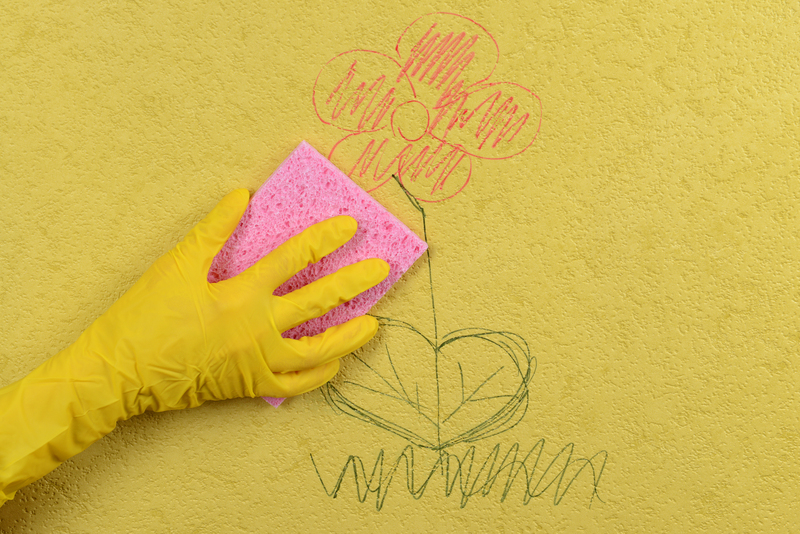How to Keep Your Surfaces Shimmering by Beating Limescale
Posted on 03/06/2024
Limescale, also known as hard water deposits, can leave unsightly marks and stains on surfaces in our homes. This mineral buildup is not only unappealing to look at, but it can also cause damage to household appliances and fixtures if left untreated. Fortunately, there are several steps you can take to keep your surfaces shimmering by beating limescale. In this article, we will discuss the causes of limescale, its negative effects, and provide tips on how to prevent and remove it from your surfaces.
What Causes Limescale?
Limescale is formed when calcium and magnesium ions in hard water react with heat. When water evaporates from a surface, it leaves behind these minerals which then stick to the surface. Over time, this buildup can become thick and difficult to remove. Hard water is most commonly found in areas with high levels of calcium and magnesium in the water supply.

Negative Effects of Limescale
Aside from making surfaces look dirty and dull, limescale can have damaging effects on household fixtures and appliances. It can clog pipes and reduce water flow, making it harder for appliances such as washing machines and dishwashers to function properly. It can also decrease the efficiency of heating systems by forming a layer of insulation on elements like heating coils. This means higher energy bills for homeowners.
Tips for Preventing Limescale
The best way to deal with limescale is to prevent it from forming in the first place. Here are some tips to help you keep your surfaces sparkling:
1. Use a Water Softener - Installing a water softener in your home can help reduce the amount of calcium and magnesium present in your water supply.
2. Wipe Surfaces Dry - Limescale forms when water evaporates on a surface, so make sure to wipe down surfaces after use with a dry cloth or squeegee.
3. Use Vinegar - White vinegar is a natural and effective way to remove limescale. Mix equal parts water and vinegar, and use it to scrub affected areas.
4. Install a Water Filter - A water filter can help reduce the amount of minerals in your water supply, making it easier to prevent limescale buildup.
5. Rinse Dishes and Appliances - After using dishes or appliances, make sure to rinse them with clean water to remove any limescale-causing residue.
6. Use Limescale Prevention Products - There are many products available on the market specifically designed to prevent limescale buildup. Look for ones that are labeled as "limescale removers" or "stain and scale prevention".
Removing Limescale from Surfaces
If you already have limescale buildup on your surfaces, there are several methods you can use to remove it:
1. Baking Soda Paste - Make a paste using baking soda and water, apply it onto the affected area, let it sit for a few minutes, then scrub with a brush and rinse off.
2. Lemon Juice - The citric acid in lemon juice can help dissolve limescale. Mix equal parts lemon juice and warm water, apply to the surface, let it sit for 10-15 minutes, then scrub and rinse off.
3. Commercial Cleaners - There are many commercial cleaners available that are specifically formulated to remove limescale. Be sure to follow the instructions carefully when using these products.
4. Scraper - For thicker and more stubborn layers of limescale, you may need to use a scraper or razor blade to gently scrape it off the surface.

Pros:
- Preventing and removing limescale can save you money on energy bills by improving the efficiency of your appliances.
- It can also improve the aesthetics of your home by keeping surfaces clean and shiny.
- Using natural methods such as vinegar or lemon juice is eco-friendly and chemical-free.
Cons:
- Preventing limescale may require additional investments such as installing a water softener or purchasing a water filter, which can be costly.
- Removing limescale can be a time-consuming and tedious task, especially for thicker layers.
- Some commercial cleaners may contain harsh chemicals that can be harmful if not used properly.
In conclusion, limescale buildup is not only unsightly but also has negative effects on household appliances and fixtures. By following the tips provided in this article, you can prevent and remove limescale from your surfaces, keeping them shimmering and in good condition. Remember to regularly maintain your surfaces and use eco-friendly methods whenever possible. With a little effort and the right techniques, you can easily beat limescale and maintain the shine in your home.



